Earlier posts from the Climate Change class showed the students coring trees and a lake for the various analysis described below. The goals are to examine climate in Ohio since the last Ice Age as recorded in lake sediments and to determine how various tree species respond to changes in temperature and moisture.
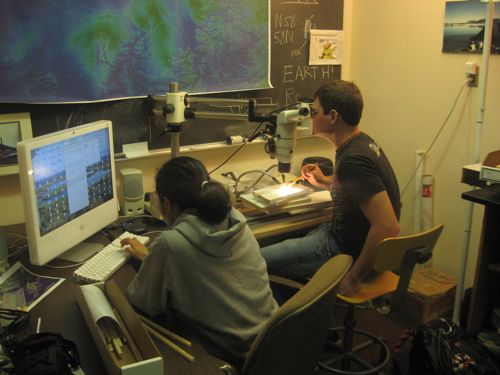
- Kelly and Adrian finish up the European Larch tree-ring chronology. The larch trees were sampled at the Secrest Arboretum in Wooster.
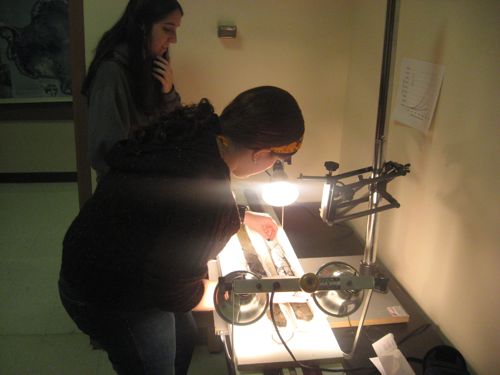
- Roz and Houston photographed the A and B sediment core taken from Long Lake located just south of Wooster. These core is over 14 meters of mud. Lower down in the post are three of their photos showing the variability in the sediment core.
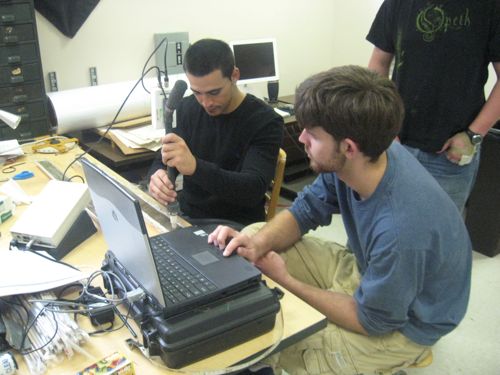
- Travis and Adonis collect magnetic susceptibility data on each of the thrusts
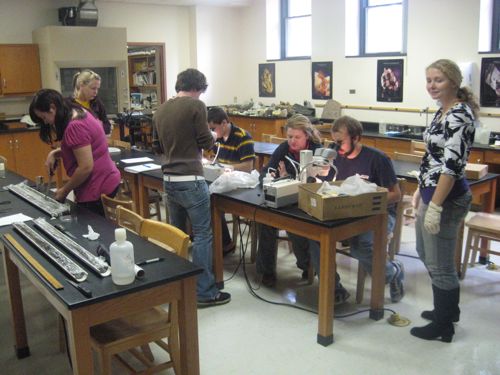
- This interdisciplinary team of English, Archaeology, History and Geology majors pick through the mud to locate organics for radiocarbon and to identify some of the flora and fauna in the mud such as seeds, charcoal, chironomids and fly wings
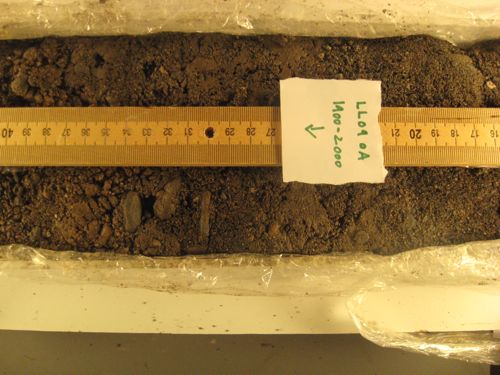
- The is the base of the core – Late Glacial sands and gravel, Lindsey and Amanda removed a stick from this interval that has been sent out for radiocarbon analysis. A date here will give a good estimate of when the region near Long Lake was deglaciated.
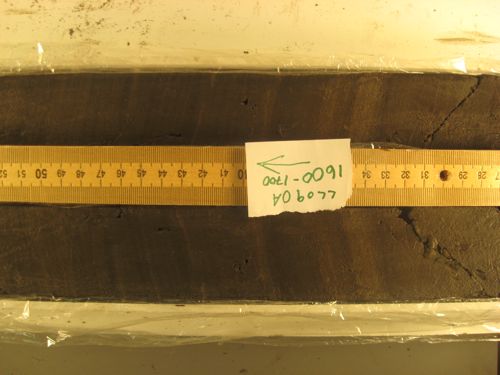
- These laminated sediments represent the glacial-interglacial interval, which includes the Glacial-Bolling-Allerod and Younger Dryas-Holocene transitions.
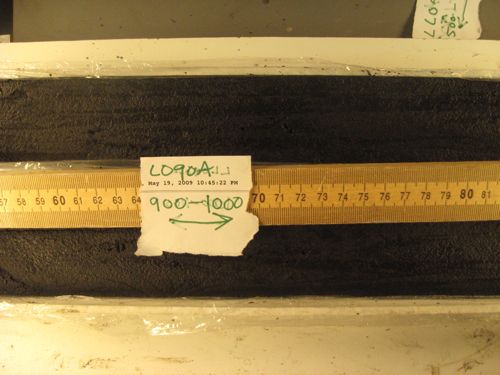
- The upper portions of the core are primarily back, organic-rich muds with occasional loess layers – are these abrupt climate changes? The class is working on sorting all that out.
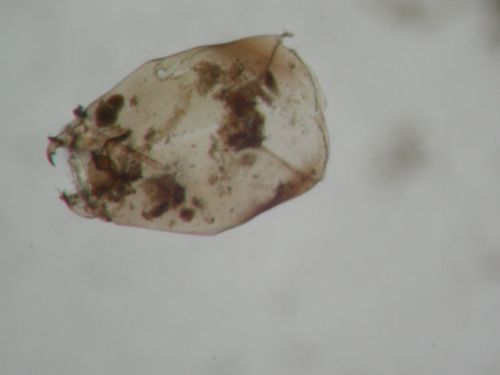
- Rob and Bridgett picked this chironomid from the 7th meter down in the core.



The first microphotograph on our blog! Well done. Cool work and interdisciplinary not only in talent but also equipment and technique.
Rob and I enjoyed taking pictures of the things we found on the microscopic level, and we took a lot of them- at first glance, the cores just look like mud and some pebbles, but as the saying goes, “there’s more there than meets the eye.”